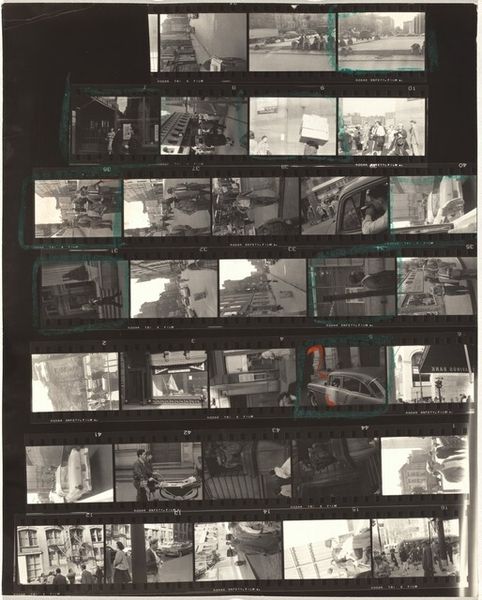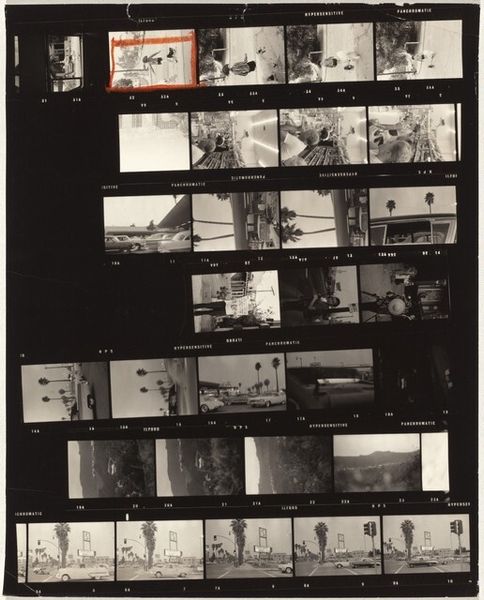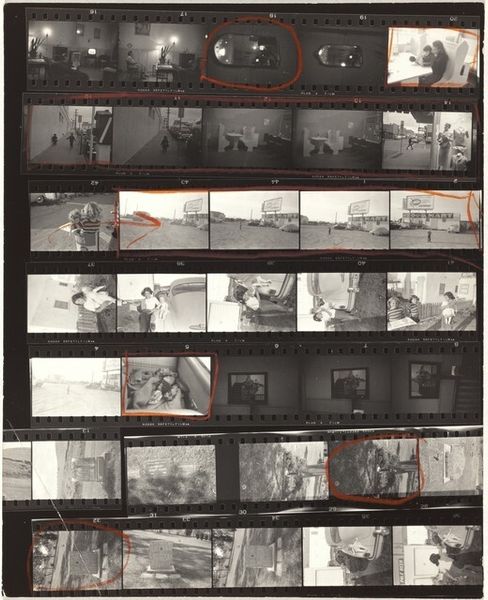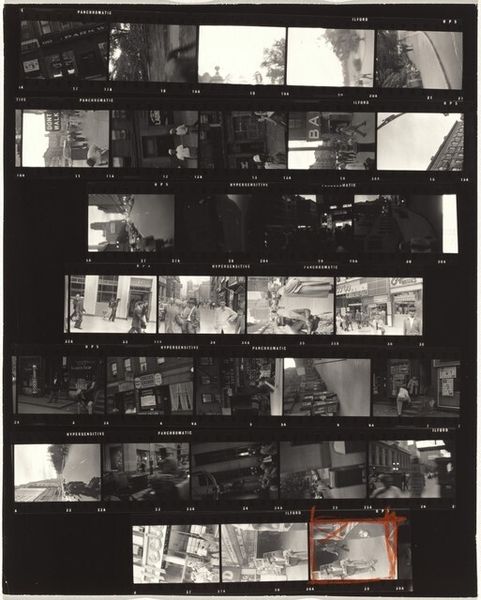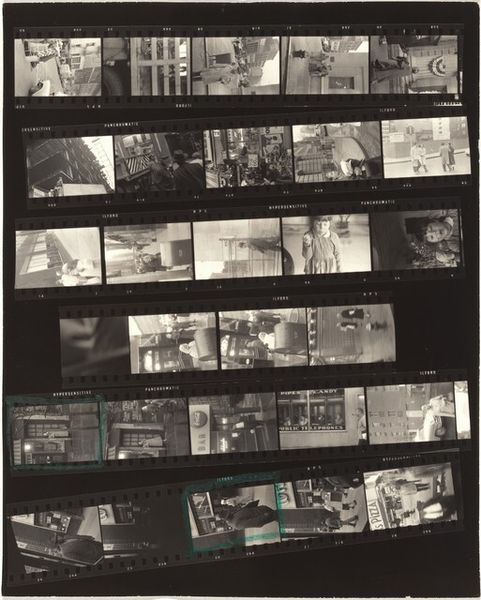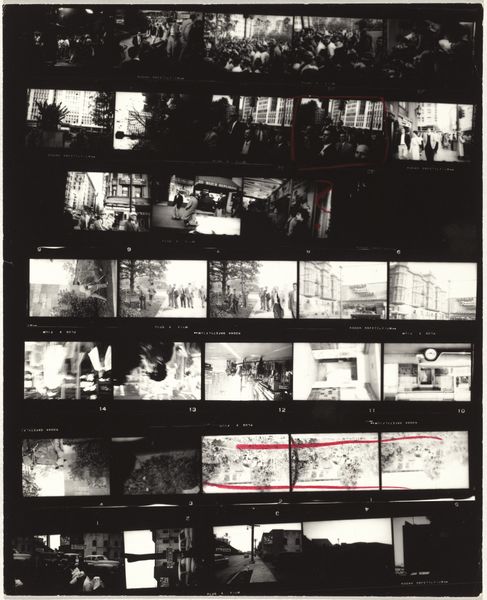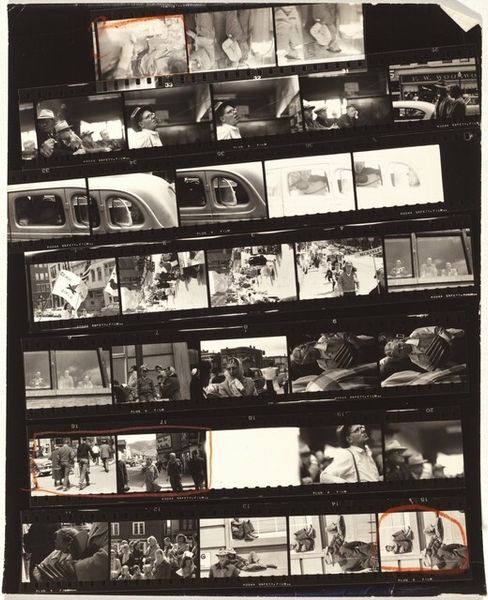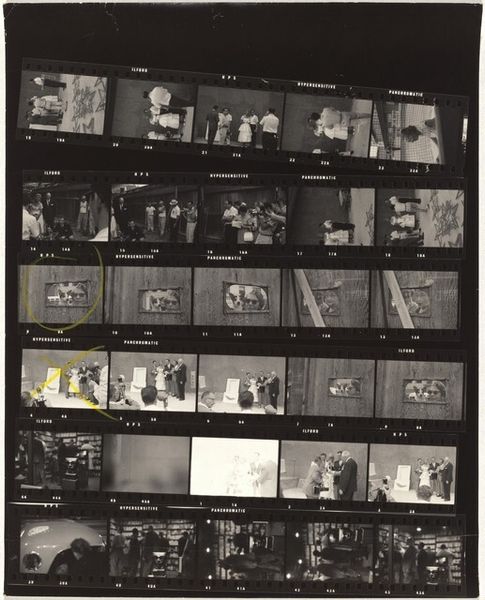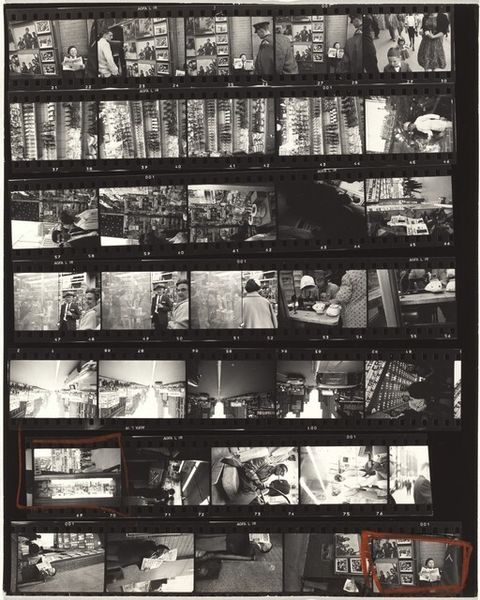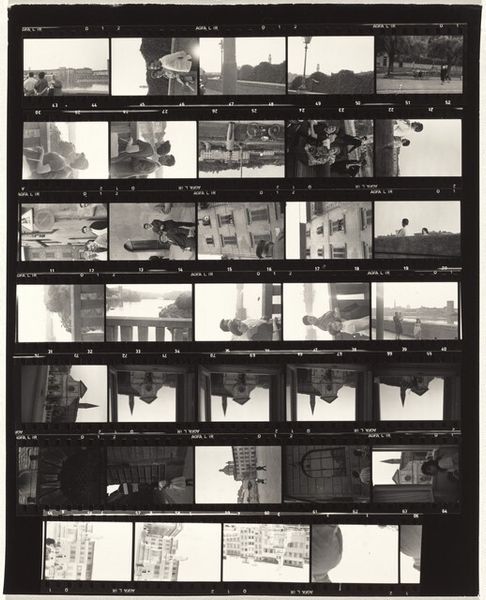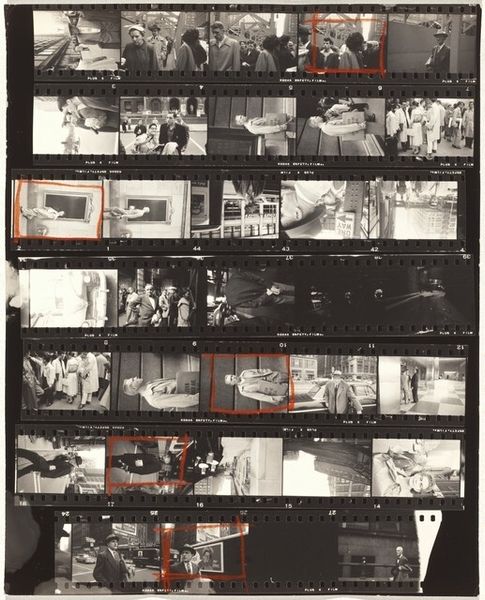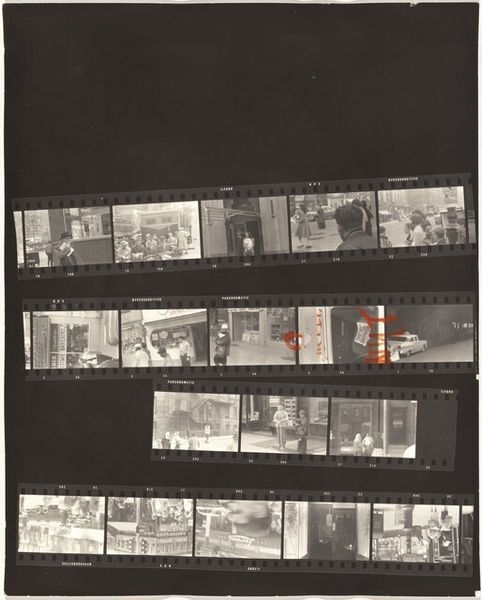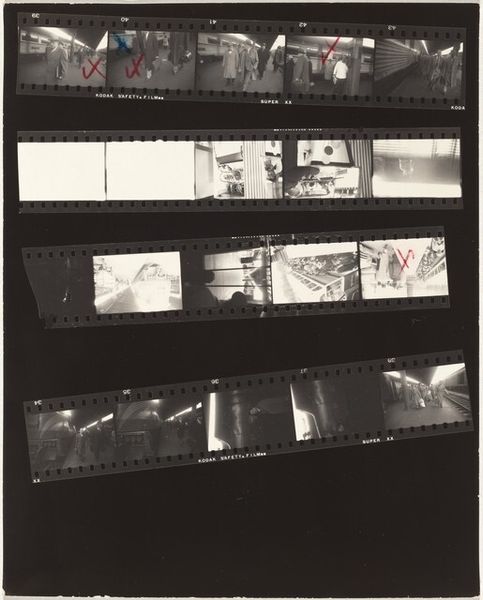
Dimensions: sheet: 25.2 x 20.2 cm (9 15/16 x 7 15/16 in.)
Copyright: National Gallery of Art: CC0 1.0
Editor: This is Robert Frank's "Winter--New York City IV," a gelatin-silver print, made from a contact print around 1953 or 54. It is actually the whole contact sheet, so you see multiple versions, arrangements, and attempts at this photograph. I am struck by how raw and unpolished it feels for street photography. What do you make of Frank's choices here? Curator: The decision to present the entire contact sheet speaks volumes. This challenges the notion of the 'decisive moment' championed by photographers like Cartier-Bresson. Frank is showing us the process, the selection, the editing – making the typically hidden infrastructure of photography visible. How do you think this relates to the socio-political climate of the time? Editor: Well, the '50s were a period of increasing mass media and manufactured imagery, right? Maybe this rawness is a counter-reaction. Curator: Exactly. It challenges the slick, idealized images prevalent in advertising and magazines. This feels authentic, gritty. Frank's work, particularly "The Americans," aimed to depict a reality often overlooked or actively obscured by mainstream media. Think about how the museum itself has historically curated imagery. What images were shown, and which were not? Editor: So by showing the contact sheet, Frank is almost democratizing the photographic process? Revealing the choices, and suggesting that meaning isn’t inherent but constructed? Curator: Precisely. And this forces the viewer to become an active participant in creating meaning. We are not just presented with a final image but invited into the selection process itself. What implications might this have for how we understand truth and representation in photography? Editor: I see now that the medium *is* part of the message here. By showing his working process, Frank subtly questions the authority and objectivity that photography had often claimed. I had never considered the political role of showing a contact sheet before. Thank you. Curator: My pleasure. Considering these elements really allows us to reflect not only on Frank’s artistry, but the larger cultural narratives at play.
Comments
No comments
Be the first to comment and join the conversation on the ultimate creative platform.
